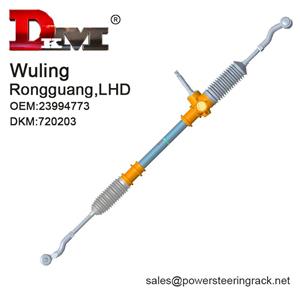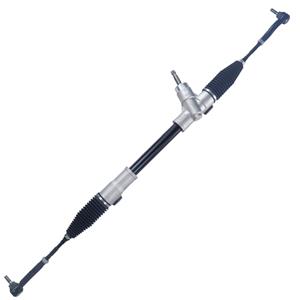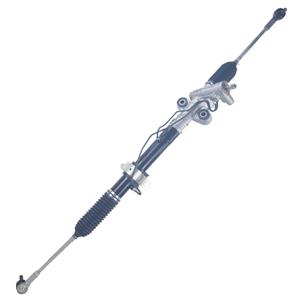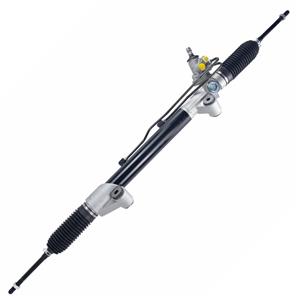Do I need to do a 4-wheel alignment after replacing the rack and pinion?
In the vehicle's steering system, the rack and pinion assembly plays a vital role in transmitting the driver's steering action to the wheels to ensure that the vehicle drives in the intended direction. When this critical component needs to be replaced due to wear, failure or damage, many car owners will face an important question: Do I need to do a 4-wheel alignment after replacing the rack and pinion assembly?
This article will explore this issue in depth from multiple angles and explain why a 4-wheel alignment may be necessary.
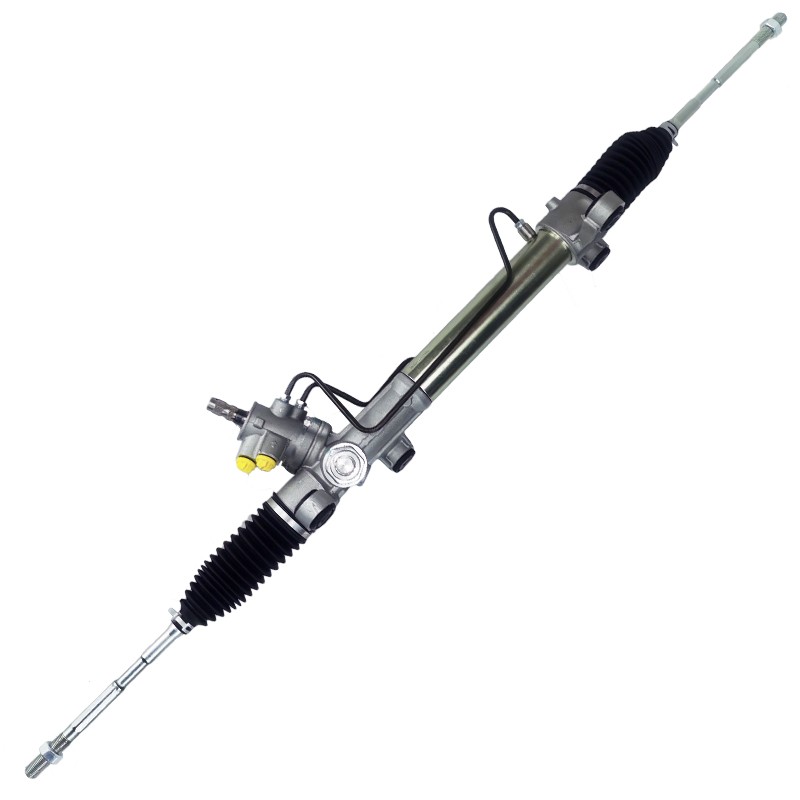
What is a 4-wheel alignment?
Before discussing whether a 4-wheel alignment is needed after replacing the rack and pinion assembly, we first need to understand what a 4-wheel alignment is and its importance in vehicle driving. 4-wheel alignment refers to adjusting the angles of the vehicle's four wheels so that they are in the correct relative position with the vehicle's suspension system and the road surface. The goal of 4-wheel alignment is to ensure that the vehicle can drive stably and avoid problems such as deviation, abnormal tire wear and inaccurate steering.
4-wheel alignment mainly includes the adjustment of three key parameters:
1. Toe angle: The toe angle is the relative position of the leading edge of the wheel relative to the trailing edge. Simply put, the toe angle determines whether the wheels are tilted inward or outward. Incorrect toe angles can cause the vehicle to run off the track or uneven tire wear.
2. Camber: Camber is the angle of inclination of the top of the wheel relative to the bottom. Too much or too little camber will affect the stability of the vehicle, especially when turning.
3. Caster: Caster is the angle of inclination of the steering axis, which affects the steering return force. Too much caster will cause the steering to be too heavy, while too little caster will affect the straight-line stability of the vehicle.
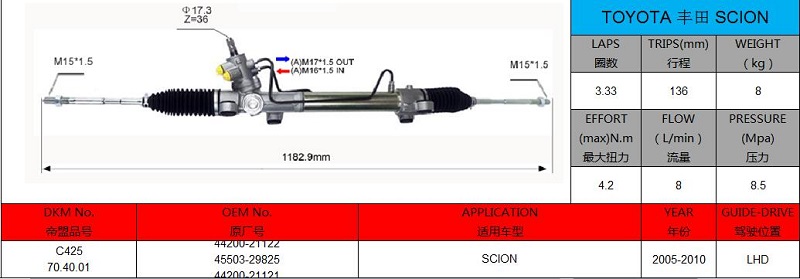
What is the role of the rack and pinion assembly?
Before discussing whether a four-wheel alignment is required after replacing the rack and pinion assembly, you first need to understand the role of the rack and pinion assembly in the steering system. The rack and pinion is one of the core components of the steering system, and its main function is to convert the force applied by the driver through the steering wheel into the steering action of the front wheels. Specifically, when the driver turns the steering wheel, the steering wheel transmits the force to the pinion through the steering column, and the pinion then drives the rack to move, causing the front wheels of the vehicle to turn.
Since the rack and pinion assembly directly controls the angle and position of the front wheels, its state has an important impact on the vehicle's driving trajectory. If the rack or pinion is worn, deformed or otherwise faulty, it may cause inaccurate steering, poor steering wheel return, vehicle deviation, and other problems, and in severe cases may even affect driving safety. Therefore, when there is a problem with the rack and pinion assembly, it is usually necessary to replace it in a timely manner.
What is the impact of replacing the rack and pinion assembly on the four-wheel alignment?
The rack and pinion assembly is one of the core components of the steering system, and replacing this component may have a significant impact on the vehicle's four-wheel alignment. The following are several major reasons why a four-wheel alignment is required after replacing the rack and pinion assembly:
Structural changes in the steering system
When the rack and pinion assembly is replaced, the structure of the steering system may change. Even slight errors or components of different brands may cause slight deviations in the position and angle of the rack. This deviation will directly affect the toe angle, camber angle, and caster angle of the wheel, resulting in misalignment of the vehicle's four-wheel alignment. Therefore, performing a wheel alignment after replacing components ensures that these angles are restored to the manufacturer's specifications, thus avoiding instability in driving.
Suspension system interference
When replacing a rack and pinion assembly, it is usually necessary to remove parts of the suspension system to facilitate the installation of the new steering assembly. During this process, the geometry of the suspension system may change, which may affect the alignment of the wheels. For example, removing and reinstalling suspension components may change the settings of the toe angle or camber angle, so a wheel alignment is required to recalibrate them.
Ensure steering accuracy
The main function of the rack and pinion assembly is to convert the rotational movement of the steering wheel into the steering action of the wheels. If the assembly is not aligned after installation, the wheels may not turn accurately according to the steering wheel's instructions. This may cause the driver to feel that the steering is not sensitive, the steering wheel is tilted, or the vehicle is pulling away when driving in a straight line. With a wheel alignment, the accuracy of the steering system can be ensured, so that the vehicle can drive stably under various road conditions.
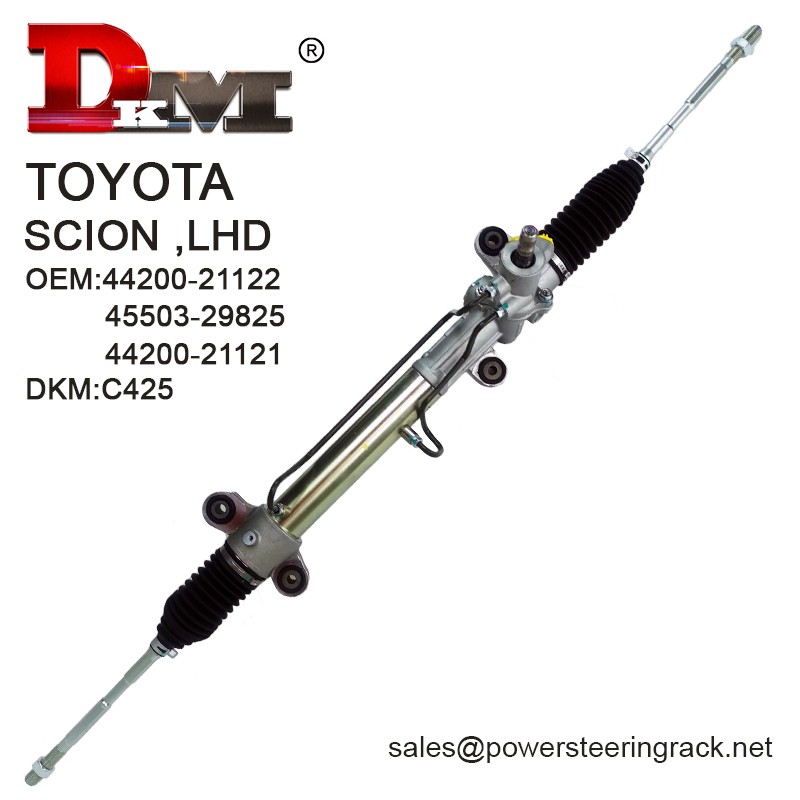
What are the risks of not performing a wheel alignment?
If you do not perform a four-wheel alignment after replacing the rack and pinion assembly, you may face the following risks:
Vehicle deviation
An uncalibrated four-wheel alignment may cause the vehicle to deviate to one side when driving in a straight line. Deviation not only makes driving more difficult, but also affects driving safety, especially when driving at high speeds or on slippery roads.
Abnormal tire wear
Incorrect four-wheel alignment causes uneven tire wear, usually manifested as excessive wear on the inside or outside. This not only shortens the life of the tire, but also increases fuel consumption and the cost of replacing tires.
Inaccurate steering
If the steering system is not properly aligned, the driver may find that the steering wheel is not centered when driving in a straight line, or the vehicle oversteers or understeers when turning. This situation affects the driving experience, increases driving fatigue, and may cause safety issues.
Damaged suspension system
Long-term driving with incorrect four-wheel alignment will cause uneven load on the suspension system, resulting in excessive wear or damage to suspension components such as springs, shock absorbers, etc. This may lead to more serious repair problems and higher repair costs.
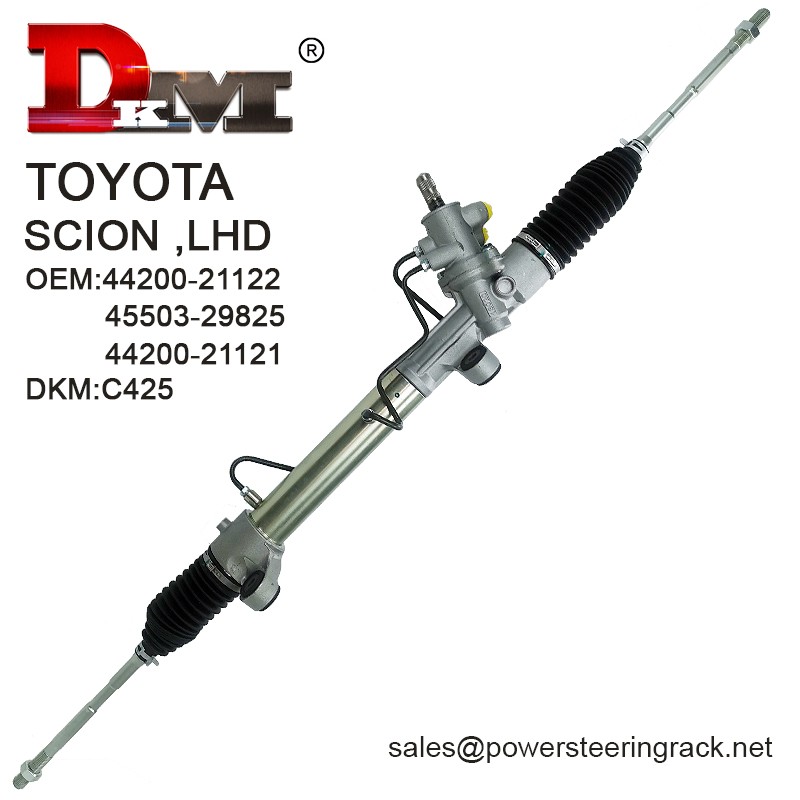
How to perform a four-wheel alignment?
Four-wheel alignment is a professional automotive maintenance operation that usually requires the help of professional equipment and tools to complete. The following are the general steps for four-wheel alignment:
Preparation
Before performing a four-wheel alignment, the vehicle should be parked on a level lift and the tire pressure should be normal. In addition, make sure that all parts of the suspension and steering systems are in good condition and not loose or damaged.
Adjusting the toe angle
Adjusting the toe angle is one of the key steps in four-wheel alignment. By adjusting the length of the steering tie rod, the toe angle of the wheel can be changed to meet the manufacturer's recommended specifications. Too much or too little toe angle will affect the straight-line driving stability of the vehicle.
Adjusting the camber angle
The adjustment of the camber angle is usually achieved by adjusting the fulcrum of the suspension system. Too much or too little camber angle will affect the steering stability of the vehicle, especially when turning at high speed. Therefore, the correct camber angle setting is essential to ensure the handling of the vehicle.
Adjusting the caster angle
The adjustment of the caster angle is usually more complicated because it involves the inclination angle of the steering axis. The adjustment of the caster angle affects the steering return force and steering sensitivity of the vehicle, so it needs to be carefully adjusted according to the specific needs of the vehicle.
Test and Confirm
After completing the four-wheel alignment, a road test is usually required to confirm that the vehicle's steering system is working properly. Make sure that the vehicle does not deviate when driving in a straight line, the steering wheel is in the center position when returning to the center position, and the steering response is sensitive and stable.
Summary
After replacing the rack and pinion assembly, performing a four-wheel alignment is an important step to ensure the normal operation of the vehicle's steering system. Failure to perform a four-wheel alignment may cause a series of problems such as vehicle deviation, abnormal tire wear, inaccurate steering, and may even endanger driving safety. Through professional four-wheel alignment, the accuracy of the steering system can be restored to ensure that the vehicle can drive stably and safely under various road conditions. Therefore, whether for driving experience or safety considerations, a four-wheel alignment is an essential operation after replacing the rack and pinion assembly.

